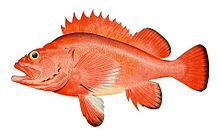

This article has multiple issues. Please help improve it or discuss these issues on the talk page. (Learn how and when to remove these template messages)
|
The Artificial Reef Society of British Columbia (ARSBC) is a registered non-profit society based in Vancouver, British Columbia (BC), and has been a registered tax-deductible charity in Canada since 1992.[1]

Its aim is to create environmentally and economically sustainable artificial reefs (ARs) in British Columbia and around the world for the protection and enhancement of sensitive marine habitats, while also providing interesting destinations for the enjoyment of scuba divers.
The Society operates without any paid employees. Instead, it is driven by a dedicated volunteer Board of Directors alongside hundreds of volunteers hailing from British Columbia, Alberta, and the northwest United States, all actively involved in its projects, and is based out of the Vancouver Maritime Museum.
Since its founding in 1991, eight ships and one Boeing 737 have been sunk off the west coast of BC.[2] These wreckages act as a safe starting point for creating additional biodiversity, similar to ship graveyards, and other man-made structures that became ARs without the toxic leaching hazardous materials such as paints and heavy metals.[3]
The Artificial Reef Society of BC claims to also be a member of the Association of British Columbia Marine Industries, however, they are not currently listed as one of the members on the ABCMI member directory.[4]
The organization's primary mission revolves around the establishment and maintenance of artificial reefs. While also enhancing the scuba diving experience and advancing knowledge and awareness regarding the technology and safety procedures associated with artificial reef creation. ARSBC is also dedicated to promoting the use of artificial reefs as a sustainable option to help alleviate the environmental impact caused by scuba diving activities, particularly in historically significant or ecologically sensitive areas. [2]
On January 24th 2007, an episode of Mega Builders aired featuring the preparation and sinking of the Boeing 737 by the ARSBC.[5]
The Annapolis was one of the main topics in Ocean Wise - Ocean Watch Report in 2020[6]
The Artificial Reef Society of British Columbia (ARSBC) is the leading organization dedicated to converting old ships into permanent marine habitats. These steel-hulled warships undergo a long processes of stripping, recycling, and repurposing, before being carefully sunk to become artificial reefs. The structures quickly support the growth of self-sustaining ecosystems in the marine environment. These man-made reefs eventually transform into environments that closely resemble real reefs, with vibrant and diverse marine life. While also becoming locations for eco-adventure scuba diving and points of interest to the science community.[2]
Since its initial sinking, the Annapolis has been used as a center point by the organization to conduct ecological studies and record biodiversity.[6]

In 2019 a study was released that assessed rockfish and other groundfish abundance and variability between natural and artificial reefs within close proximity to each other. The study, which was done using remotely operated underwater vehicles (ROV), found that while, natural reefs had higher species richness, artificial reefs had greater species abundance. However, the artificial reefs displayed much greater variability when compared to the natural reefs in both abundance and richness. [16] The ARs selected for this study included, M.V. G.B. Church, HMCS Mackenzie, Cape Breton, Saskatchewan, Columbia, Annapolis, and the Boeing 737. As well as two unintentional wreckages, the Capilano, and Shamrock.

The project, which started in 2008 with the purchase of the Annapolis from the Canadian Government, almost immediately encountered some issues and sparked controversies. Financial issues, shifting federal regulations, emerging environmental concerns, and legal disputes led to extended timelines and increased costs. Most notable legal challenges posed by the group, Save Halkett Bay Marine Park Society temporarily halted the sinking, citing concerns over environmental hazards posed by the presence of Tributyltin chlorode (TBTs) in the ship's paint.[17] However, the federal court ruled in favor of ARSBC, stating that the amount of TBTs remaining on the hull fell within allowable limits set by legislation.[18]